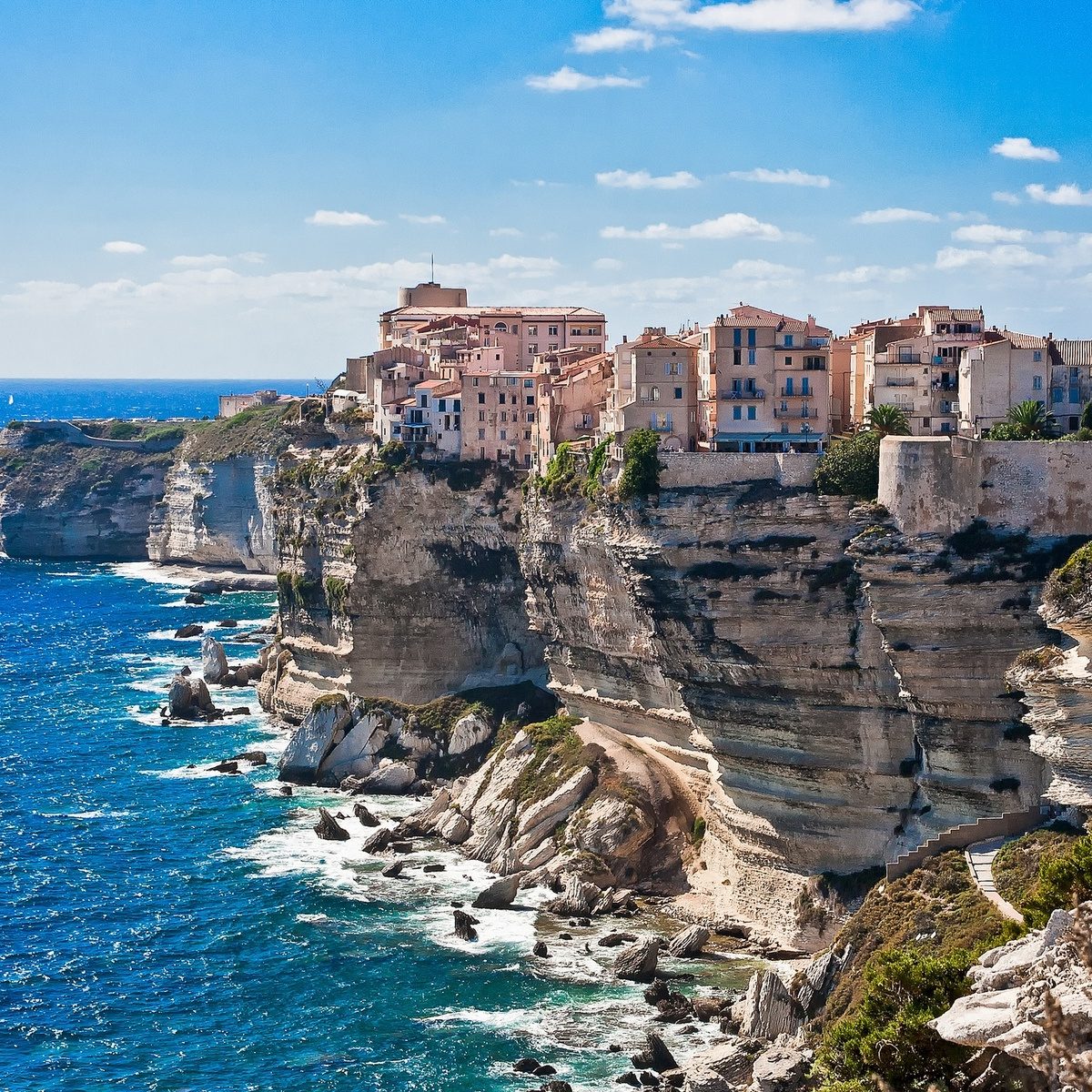FRANCE – Corsica (Napoleon’s Island)
A thousand Kilometers of coastline surrounding a mountain spurted from the sea mists of time and 2710 meters high. You could at first take this summary definition as product of some sophisticated tourist slogan; and yet, it summarizes the outstandingly beautiful characteristics of the third largest island in the Mediterranean. The fact that some say it was part of ancient Atlantis or that the place is pregnant with tormented history, old as well as recent, is one more reason to closely study this island with its traces of ancient glory.
What however attracts the sailing tourist are those orographic wonders found along the coasts, in some parts high and wildly intended; and low, sandy even marshy in some other. Wherever you look you face a natural wonder set in a wildly blue water and framed by granite pink cliffs: a real paradise especially for those setting out from the Tuscany and Ligurian coast who have it just around the corner. A close by destination that needs to be circumnavigated always anti clockwise in order to take better advantage of the northern winds usually blowing on the island’s western side; exactly the opposite of what is suggested when driving by car where, due to the very narrow coastal roads siding almost vertical cliffs, one is better off on the internal road side in case of giving way to cars coming from the opposite side.
The most direct link to Corsica is the one via Elba and Capraia islands: a thirty miles navigation will take you into Corsica territory. If arriving from the North, Liguria, by night sailing, the landfall is usually at Macinaggio. Good shelter can be found immediately to the South East of Corso Cape when fresh North West winds makes the navigation hectic and lively. Macinaggio offers 500 berths of which 200 are reserved to the transiting traffic in a bay extremely well protected from the western winds and in good water depth. The town, still untouched and typical, is just starting to offer tourist facilities.
Saint Florent, located at the bottom of the homonymous gulf and to the West of the peninsula surmounted by the Stella mountain, is totally different. Navigation between the two ports is exhilarating when passing close to the Giraglia reef, site of so many famous regattas. The reef has a powerful lighthouse with a 28 mules range. Nighttime sailing close by the reef will give the unique sensation of being brightly crowned by the periodical lighthouse’s flashes while daylight navigation will display an unusual sight of green fields strongly reminding of an alpine surrounding. A landing is available at Centuri, South West of the Cape with 125 berth for boats up to 10 meters LOA. Saint Florent has nothing to envy to the typical Ligurian coastal towns of which it has taken the characteristically architecture. A plus of course is that you are now in Corsica. Tourism is aplenty but in a very relaxed atmosphere with many shops boutiques which make the exploration of the internal alleys even more interesting. The harbor is well organized with 700 berths (200 for the transit trade) but arriving late in the day will pose the risk of having to spend the night at anchor at the Formali bay. Ile Rousse dock should only be used for a brief stay, enough to bunker, re-store and purchase ice but above all, the delicious freshly baked bread.
The next stop should be at Calvi, a splendid town comparable to Saint Tropez and, if possible, even more exclusive. It is worth stopping by and have a swim off shore and then enjoy a night ashore close by the Foreign Legion Headquarters.
After making good the splendid Revellata point ( you can not go wrong: in Corsica, capes and points display routes like signs!), the south bound navigation begins and, with a going wind you steer for Muchilina. There, just around the corner, it is the renowned Girolata. You can not miss a night at anchor in the tower’s shadow in front of the beach. A small restaurant only reachable by land and donkey riding, is a part of this stop over, which will be unforgettable, being sure your and yours neighbors’ anchor is bottomed properly. The very deep Porto gulf is also a good alternative for night anchoring without having to negotiate the channel dock which is usually reserved to crafts with less than 2 meters draught. Once there do not skip a visit to the inlets around Cap Rossu where sea eagles nests rest on overhanging granite pillars. Be sure that a suitable night anchorage is chosen beforehand in case of weather sudden deterioration.
Southward you will find Cargee and further south there is Corsica capitol, Ajaccio, e real city with two marinas with over 1000 berths. Landing at Ajaccio may not be easy due to the Sanguinaries island to make good, night time navigation however is made easy by an efficient light ranges system.
Yachting wise speaking, the real Corsica may be found outside the civilized establishments: further south there is Propriano on the deep Valinco gulf with 380 berths for boats up to 30 meters LOA. Continuing southward, the ill famed Bonifacio Mouth are closed in where the wind is funneled suddenly increasing in strength. Bonifacio town can not be bypassed if for nothing else to visit the deep gully where navigation takes place in a white stone canyon. The town, whose main activity is naturally enough tourism and lobster fishing, is at the bottom of the gully. The entrance is easy although in daylight the harbor mouth is not distinguishable from the sea. A walk to high town is a must as it offers a charming view towards the sea and the fjord as well, capped as it is by the Foreign Legion forts and whose headquarters is also here.
After leaving the Bonifacio waters, sailing between Lavezzi and Razzoli and coasting Cavallo, the course will gradually shift northward; if weather conditions are not good and before making the final crossing that ends the circumnavigation, it is suggested to anchor for the night at Porto Vecchio, at the end of the homonymous gulf. Do not attempt to enter by night; failing local knowledge and following the bearings and chart ranges will only land you to an external breakwater. By so doing, proper time and weather conditions can be selected for the return crossing. If instead it is decided to continue the circumnavigation on the eastern low and marshy island’s side, good landing possibilities can be found at Solenzara and Campoloro.
Like most of the Mediterranean, the Corsican yacht chartering season generally runs from April to the end of October.


